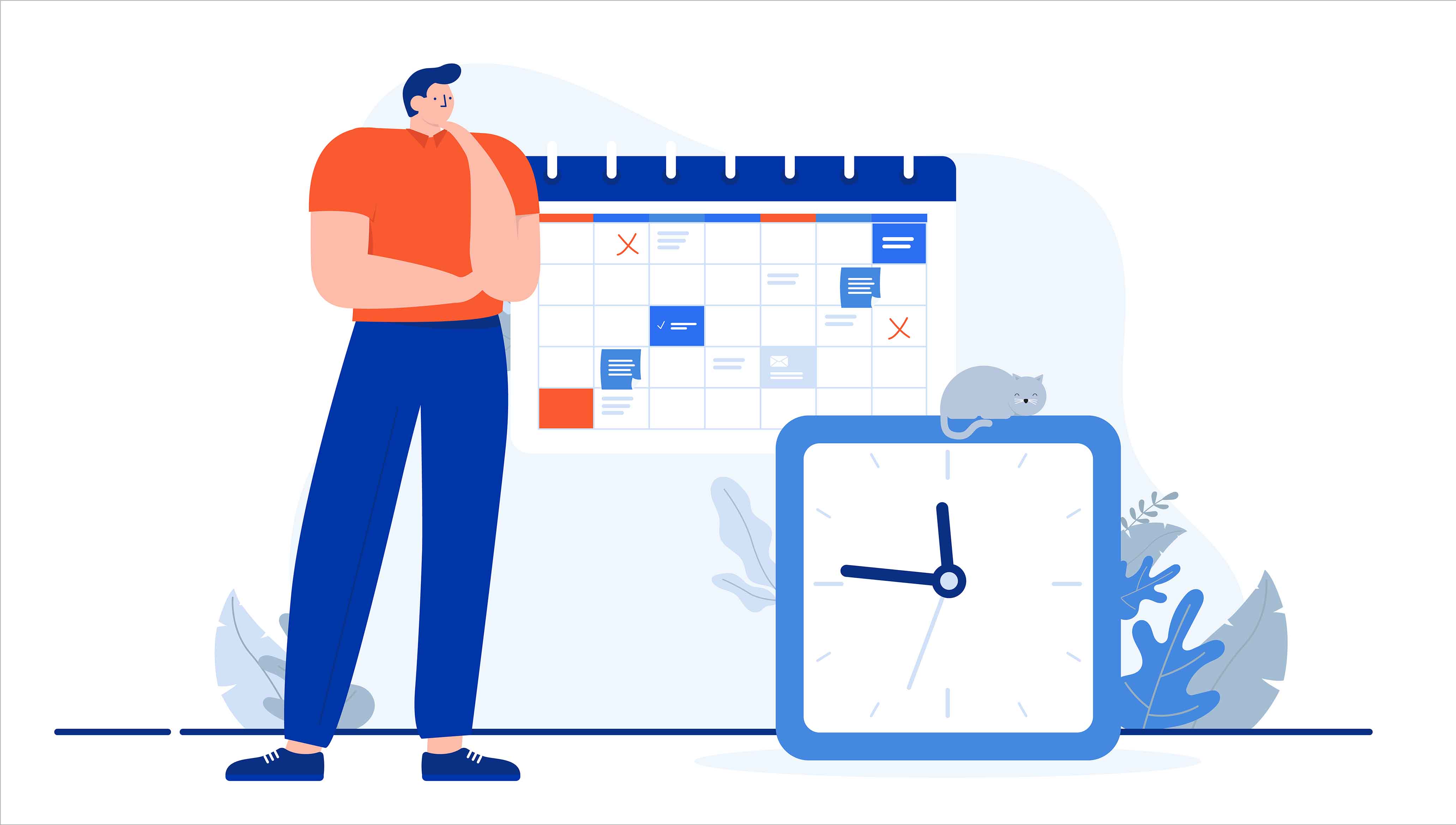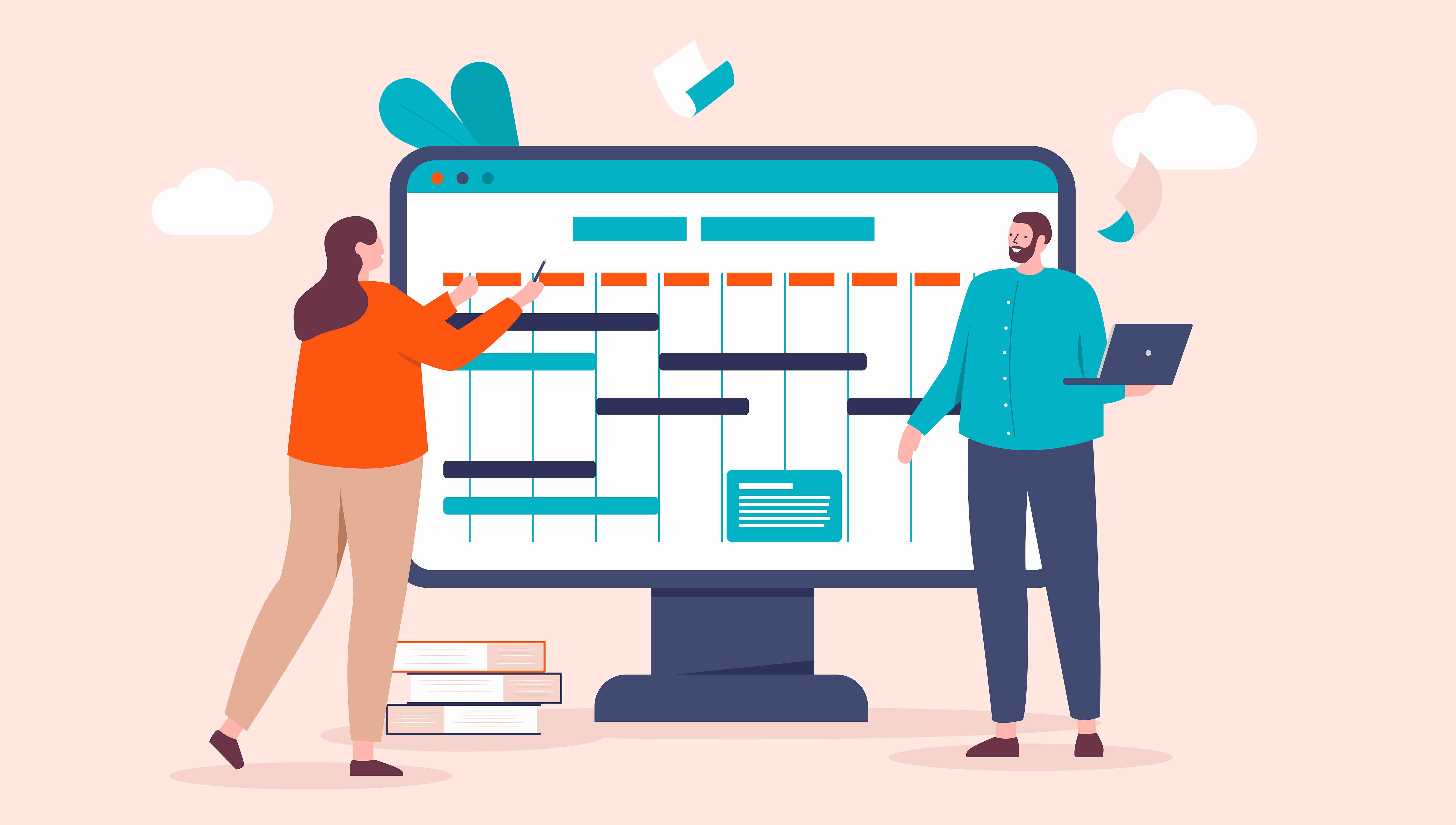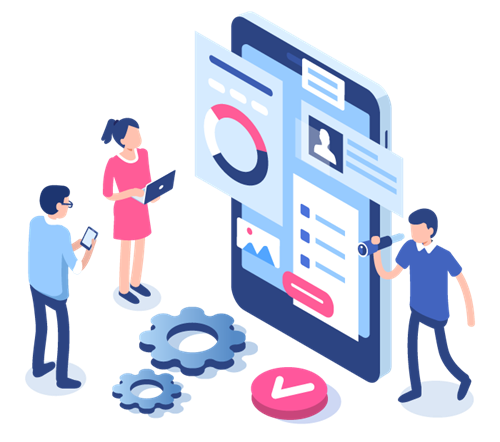20 Proven Strategies for Contact Center Workforce Optimization
by Erina Suzuki | Published On February 19, 2025 | Last Updated September 15, 2025

Learn how to boost efficiency and productivity, reduce costs, and transform customer service with these expert tips for contact center workforce optimization.
Today’s contact centers are fast-paced, complex environments, brimming with multi-faceted teams responsible for handling everything from outbound sales campaigns to holistic customer service. Making the most out of your contact center can be a delicate balancing act.
Business leaders need to ensure they’re adhering to evolving expectations for lightning-fast response times and personalization across multiple channels. At the same time, they need to ensure they’re controlling costs and setting realistic expectations for teams. That’s where the right contact center workforce optimization strategy comes in.
Investing in the right Workforce Optimization (WFO) technologies and strategies helps businesses to enhance operational efficiency, improve customer experience and loyalty levels, and minimize the risks associated with overstaffing and understaffing. So, how do you approach workforce optimization the right way this year? This guide covers the twenty best practices for a powerful WFO strategy.
Best Practices for Workforce Planning and Scheduling
Efficient workforce planning and scheduling form the backbone of a successful contact center. Workforce management technologies offering insights into call volumes, demand levels, and performance metrics are how you ensure you’re aligning staffing needs with anticipated workloads and customer expectations. Here’s how you can upgrade your scheduling strategy.
1. Analyze Historical Data
The contact center can be unpredictable. Demand levels can fluctuate over time, increasing and decreasing based on various factors. While you can’t always foresee unexpected “spikes” in call or contact volumes, you can use historical data to identify common trends. Historical data can offer behind-the-scenes insights into busy days, seasons, or periods, and even help you to understand which factors are most likely to cause changes in demand.
For instance, you might discover that calls typically increase the first couple of days after a national holiday, or for the first week or two after you launch a new product. Using that data, you can more effectively anticipate when you might need more staff members dealing with inbound and outbound calls, and which channels you should be prioritizing.
2. Implement Flexible Scheduling
Even with valuable historical data, the needs of your customers and your employees can change suddenly. That’s why flexibility is so important in the contact center. It can help you to accommodate sudden changes in demand, while simultaneously improving employee satisfaction and engagement.
Studies have shown that employees with access to flexible schedules are less likely to experience burnout, and more likely to stay loyal to their employers. Consider implementing self-service scheduling tools that allow agents to trade shifts and adjust their availability as needed.
This approach not only empowers employees but also makes it easier to cover unexpected gaps without disrupting operations.
3. Use Workforce Management Tools
This might seem like an obvious suggestion, but advanced workforce management (WFM) tools make a huge difference to contact center workforce optimization. Innovative tools and software simplify forecasting and scheduling processes and can even help you make real-time adjustments to staffing requirements when sudden changes occur.
ComputerTalk’s ice Contact Center solution works with cutting-edge WFM platforms like Verint, Calabrio, and many others. These tools come with access to in-depth analytics, AI-powered scheduling tools, and even gamification systems to boost employee motivation.
Some platforms even include real-time schedule adherence tracking tools and self-service portals, to boost operational flexibility.
4. Plan for Peak Periods
Every company experiences periods of “peak” demand. In the retail and ecommerce sector, the needs of your contact center will automatically increase around specific dates, such as Black Friday and Cyber Monday. In the educational sector, you might need more staff members around the time when application deadlines are beginning to approach.
Plan how you’re going to handle these periods of peak demand. Are you going to give your existing employees overtime options? Will you invest in temporary seasonal staff, or outsourced support?
Can you consider creating AI bots and virtual assistants that can help to handle common requests on behalf of human agents? Remember to communicate your plans to staff members in advance, so they can prepare accordingly.
5. Monitor Schedule Adherence Levels
Although giving your employees flexibility is important – particularly when it comes to boosting motivation, engagement, and retention rates – that doesn’t mean your team members should simply ignore your scheduling strategy. Monitoring adherence to the schedule is how you ensure your team members understand the expectations you have of them.
It can also be a good way to determine whether you’re being realistic with how you distribute work among team members. If adherence levels are low, this could indicate that you’re overworking your employees and risking burnout among teams. Combine schedule adherence metrics with employee surveys for deeper insights into what might be causing scheduling problems.

Best Practices for Enhancing Agent Productivity
Contact center workforce optimization isn’t just about ensuring you have the right number of staff members available to handle all your customer service and sales needs. It’s also about ensuring you’re getting the most value out of the human resources you have. Here are some best practices for enhancing agent productivity – ensuring your team members reach their full potential.
6. Provide Comprehensive Training
Agents are only as effective as their training allows them to be. Comprehensive training programs ensure that agents are well-versed in product knowledge, customer service techniques, and the tools they use each day. Don’t just create a comprehensive initial “onboarding” plan for your teams.
Focus on ongoing learning and continuous improvement. Provide access to platforms like LinkedIn Learning or industry-specific certifications for agents to build skills.
Offer access to a range of educational resources, covering everything from top tips on how to use critical contact center technology, to advice on developing soft skills related to customer communication and empathy.
You could even consider implementing buddy and mentorship programs, to enable peer-to-peer learning strategies across your organization. Remember, well-trained agents are more confident, more equipped to handle issues quickly, and more likely to achieve better first call resolution rates.
7. Set Clear Performance Metrics
Agents in the contact center perform better when they have clear insight into what’s expected of them. Establishing clear “Key Performance Indicators” for your team – covering things like First Call Resolution (FCR) rates, average handle times (AHTs) and customer satisfaction scores (CSAT) – gives your employees measurable goals to work towards.
Think carefully about the goals you’re setting for your teams, they should be measurable and realistic. It’s important to strike the right balance between productivity and service quality. For example, focusing solely on AHT may encourage agents to rush calls, potentially compromising the customer experience.
To help agents monitor and proactively improve their performance, give them access to dashboards and statistics. You could even consider experimenting with gamification, creating leaderboards where teams can compete for the best results.
8. Offer Real-Time Feedback
Real-time feedback is a game-changer for agent productivity. Rather than waiting for monthly reviews, managers can use call monitoring tools to provide immediate coaching.
For example, if an agent struggles with handling objections, supervisors can listen in on live calls and offer constructive suggestions between interactions. There are even AI-powered tools that can offer proactive suggestions on how to improve interactions and address common customer concerns.
AI-powered systems can also flag specific interactions for review based on the tone or language used, customer sentiment, and conversation outcomes. This can help supervisors identify areas where agents might need the most support or guidance.
9. Encourage Multi-Skilling
Today’s contact center agents often need to handle a range of different interactions, from conversations about technical problems, to discussions about products and billing issues. They also need to be able to navigate those conversations across a range of channels, from phone, to live chat and email.
“Multi-skilling” ensures you can prepare your agents to deal with a range of different tasks, ensuring they can adapt to fluctuating needs and demands. Don’t just rely on one set of employees to handle billing issues, while another focuses on technical problems. Make sure every staff member knows how to support customers throughout the purchasing journey.
Using a contact center solution that integrates with a collaboration platform, like ice Contact Center for Microsoft Teams, can also help agents learn new skills and collaborate with subject matter experts in real time throughout complex conversations.
10. Reduce Unnecessary Manual Tasks
Imagine how much more effective your contact center agents would be if they could spend more time nurturing, supporting, and engaging customers, and less time dealing with repetitive tasks. Countless employees waste hours on manual data entry, call logging, and even dialling customer numbers.
With intelligent automation tools, you can eliminate those unnecessary tasks and save your team members valuable time. Modern intelligent tools can handle everything from transcribing and summarizing calls, to updating customer records on behalf of human agents.
You can even use tools like automatic outbound dialers to ensures sales teams spend more of their time actually speaking to customers, rather than trying to initially “connect” with them.
Best Practices for Employee Engagement and Retention
The right contact center workforce optimization strategy reduces costs, improves operational efficiency, and improves customer satisfaction. However, it can also help to boost employee experiences, reducing the risk of talent turnover and enhancing productivity. Here’s how you can use your WFO strategy to increase employee engagement and retention.
11. Foster a Positive Work Environment
How can you make your workplace a positive environment for your employees? Developing a culture based on cross-functional collaboration, support, and mutual respect is an excellent first step. The right technology can help you foster a positive workplace environment in various ways.
It can make it easier for employees to maintain more control over their schedules, with real-time self-service solutions for shift swapping. It can also inspire collaboration. For instance, a contact center platform integrated with a platform like Microsoft Teams can help employees interact more consistently throughout the day, sharing knowledge and insights.
To ensure you’re creating the best possible environment for your teams, seek out feedback. Ask staff for suggestions on how you can improve their work-life balance or address common concerns.
12. Recognize and Reward Performance
Recognition in the workplace is powerful. It drives engagement, improves productivity and employee satisfaction, and helps to reinforce positive behaviors. Regular recognition can also significantly reduce turnover rates. Around 53% of employees say they would stay with an employer that makes them feel appreciated for longer.
Use employee performance dashboards and review cards to keep a close eye on your team members and identify your top performers. Recognize the people who go above and beyond for your business with private or public thank you messages, bonuses, or extra incentives.
If you want to motivate an entire team of employees at once, consider tracking team performance, and rewarding groups for their combined contribution to your company’s goals.
13. Promote Career Development
Employees are more likely to stay with a company that invests in their growth. Career development opportunities not only enhance agent skills but also show employees that their employer is committed to their long-term success.
Offer training programs, certifications, and leadership development initiatives tailored to contact center roles. For instance, you might train your customer service teams on outbound sales strategies, so they can support their colleagues with more stages of the customer journey.
Remember to establish clear pathways for progression too. For instance, let your team members know how they can move from standard agent roles to supervisor or team lead positions by investing in specific skills or achieving certain targets.
14. Conduct Regular Employee Surveys
Just as you need to understand your customers, their pain points, and their expectations to boost retention rates, you need to know how your employees are feeling, to ensure you’re giving them experiences that make them want to stay with your organization.
Sourcing direct feedback from your employees, either through one-on-one discussions, group meetings, or anonymous surveys can give you valuable information to work with. The insights you gather can help you to identify the causes of dissatisfaction among teams, and even implement solutions to issues before dissatisfaction starts to escalate.
For instance, if your surveys reveal that agents feel overwhelmed during peak periods, you could consider hiring additional support staff or redistributing workloads using WFM tools.
15. Prioritize Work-Life Balance
Every contact center supervisor, manager, or leader wants their employees to be dedicated to their job. However, that doesn’t mean compromising on work-life balance. When staff members spend too much time focused on their career and don’t have enough time to focus on themselves, their chances of burnout and disengagement increase.
Encourage employees to take regular breaks throughout the working day and monitor their energy levels. Ask them to let you know if they feel their workload is too much to handle and remind them to “switch off” when they’re not in the office.
Offering flexible scheduling options can help to boost work-life balance too, by giving employees more control over the hours they dedicate to their professional and personal lives.

Best Practices for Customer-Centric Workforce Optimization
Every modern business should have a customer-first mindset today. In other words, prioritizing customer needs over operational silos or short-term profits builds loyalty, enhances satisfaction, and drives sustainable growth. A customer-centric approach ensures every decision—whether in scheduling, training, or technology—aligns with improving the customer experience. Here’s how to implement a customer-first mindset in your WFO strategy.
16. Use Skills-Based Routing
Matching customers with the right agents is a game-changer for contact centers. Skills-based routing leverages agent expertise, ensuring that customer inquiries are handled by the right people, reducing the need for transfers, and increasing first-call resolution rates.
For example, an agent trained in technical troubleshooting should handle IT-related issues, while an agent with strong communication skills might excel in resolving billing disputes. ComputerTalk’s intelligent routing tools make it easy to match customers with agents based on their specific needs, historical data, and countless other factors.
This approach also reduces agent frustration, as employees feel more confident and capable handling tasks aligned with their strengths.
17. Focus on First Call Resolution
First Call Resolution is one of the most critical metrics in customer service. Resolving issues during the first interaction reduces customer frustration, minimizes call volumes, and increases loyalty.
So, consider how you can empower your teams to solve problems the first time they interact with a customer. Providing access to comprehensive training, robust knowledge base content, and even AI-driven scripts can make a huge difference here.
Integrating your contact center software with unified communication platforms can also be helpful, allowing agents to source real-time support from subject matter experts when they’re struggling to handle a complex query or request alone.
18. Leverage AI for Enhanced Customer Insights
Artificial Intelligence (AI) is revolutionizing how contact centers understand and serve their customers. By analyzing historical interactions, browsing behavior, and even sentiment, AI tools can predict customer needs and provide agents with actionable insights during live interactions.
For instance, if a customer frequently inquires about shipping delays, AI can flag this as a potential concern and proactively suggest solutions to the agent. Tools like ComputerTalk’s AI-powered analytics can also help managers identify recurring issues, enabling systemic improvements to processes or training programs.
You could even use the insights you gain from AI tools to create self-help resources for customers, like FAQ pages and troubleshooting guides.
19. Minimize Hold Times
No-one enjoys waiting on hold. That’s particularly true now, at a time when customers are used to getting instant support on a variety of channels. Fortunately, there are various ways to minimize hold times. You can use your workforce management tools to forecast call volumes and align staffing levels accordingly or use AI to enable self-service.
Another great strategy involves offering customers call back options – allowing them to request a call from an agent when one becomes available, rather than simply waiting in a queue. Reduced hold times will improve customer satisfaction scores – and reduce the strain on your agents.
20. Continuously Analyze Customer Feedback
Finally, your contact center performance metrics can only tell you so much about how effectively you’re running and managing your team. Customer feedback can add context to the data you collect, making it easier to implement intelligent, data-driven changes.
Sending out customer surveys gives you a great way to identify the key issues that cause the most problems for your customers, as well as possible solutions. For instance, if your customers constantly complain about long wait times, they might also mention that they’d prefer to see a callback option in your IVR menu, or a self-service bot on your website.
Analyzing customer feedback can also help you to identify if any changes you make to your customer service strategy are working to improve customer satisfaction and retention rates.
Optimizing Your Contact Center Workforce
Workforce optimization isn’t just nice to have in the contact center – it’s crucial at a time when customer expectations are constantly evolving. The best practices above will help you to implement a WFO strategy that not only improves customer satisfaction, but also reduces operational costs, enhances employee experiences, and increases team productivity.
With ComputerTalk, you can access the AI-powered tools, dashboards, analytical systems, and automation options you need to take your workforce optimization strategy to the next level. Contact our team today to learn more about the tools we can offer to boost workforce optimization.
More from our blog
 The importance of connecting with students in meaningful, effective ways cannot be overstated. If higher education providers want to succeed amongst their competitors, they need to prioritize a customer-centric strategy in their organization.
The importance of connecting with students in meaningful, effective ways cannot be overstated. If higher education providers want to succeed amongst their competitors, they need to prioritize a customer-centric strategy in their organization.
 As the front line of communication with your customers, your contact center agents can be thought of as the face of your organization.
As the front line of communication with your customers, your contact center agents can be thought of as the face of your organization.
 Building an effective training program is an essential part of managing a call center.
Building an effective training program is an essential part of managing a call center.

